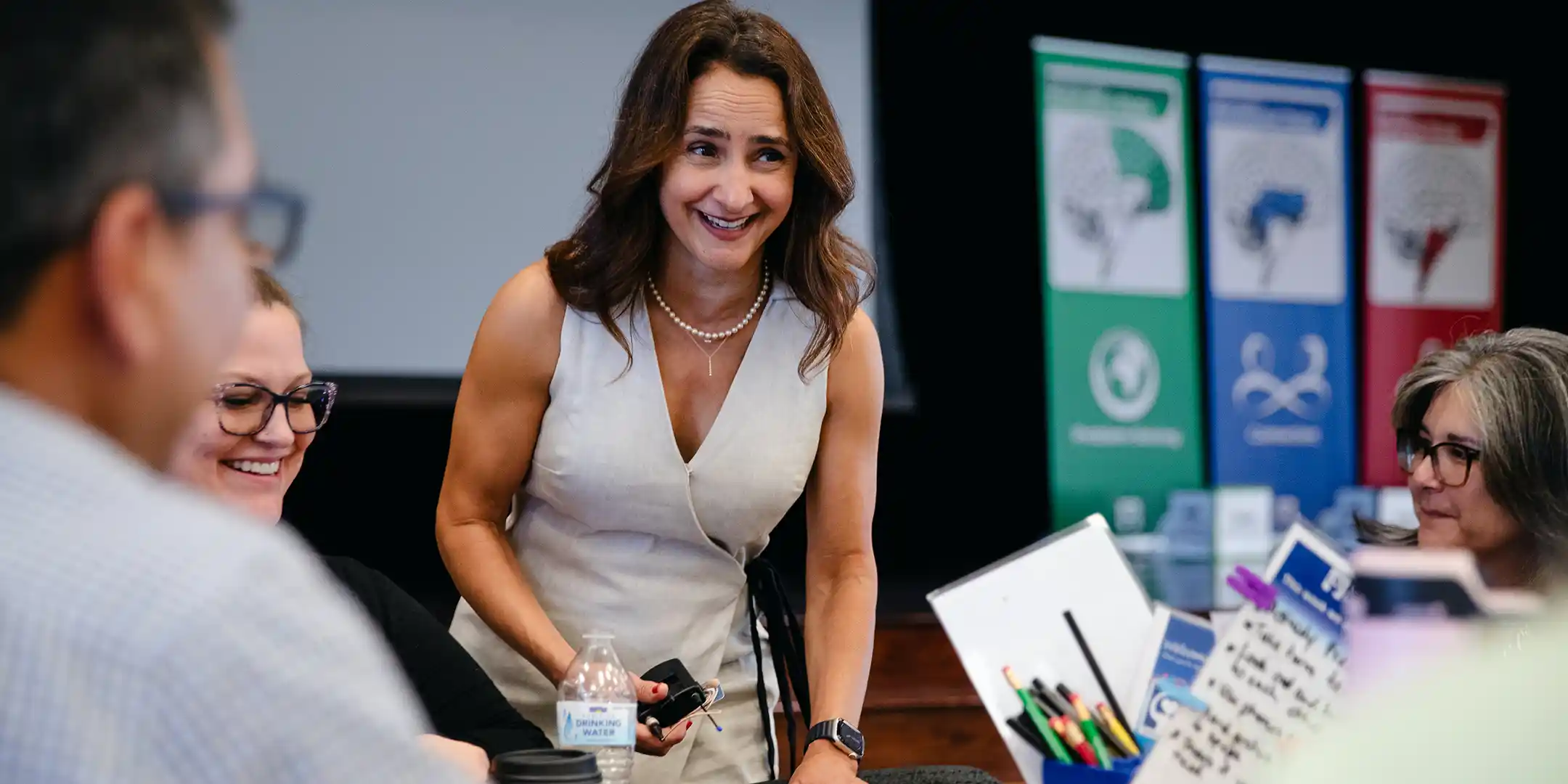Supporting Every Student: Improving Outcomes and Experiences in Inclusion and Self-Contained Classrooms
Now, more than ever, schools recognize students’ unique and varied needs, and are seeking to meet them effectively. The sheer number of IEPs, inclusion classrooms, diagnosed and undiagnosed concerns, and specific modifications is rapidly increasing, often leaving teachers playing catch-up.
Diverse learners require flexible, responsive solutions, whether they are in self-contained or inclusion classrooms. Teachers who implement Conscious Discipline practices are uniquely empowered to reach and teach all students.
“The methodology of Conscious Discipline is already an inclusive approach. When applied in both self-contained and inclusion classrooms, Conscious Discipline provides best practices for all children. It might look different depending on the age or needs of the child, but they are the same principles,” said Elizabeth Montero Cefalo, a long-time Conscious Discipline Certified Instructor.
Professional Development Struggles to Keep Pace with Learners’ Needs
In a typical American classroom, you’ll find an amalgamation of diverse learners. Students with physical and emotional disabilities, neurotypical and neurodivergent students (some without formal diagnosis or accommodations), and students with different learning styles are often expected to socialize and learn together— and the teacher is expected to make that learning magic happen even when faced with understaffing, budget cuts and achievement gaps. Traditional practices have operated under the assumption that students with exceptionalities need to be “fixed” by withholding the very things we all need at a core level: safety and belonging. We know now that nothing could be further from the truth.
More than 60% of students with disabilities learn in general education classrooms, and a Diversity for Social Impact report reveals that these inclusive classrooms improve both graduation rates and standardized test scores. Exposure to students with unique needs and learning styles also opens new pathways for problem solving and critical thinking, and students in inclusive settings are 7% more likely to demonstrate empathy towards peers and report lower levels of anxiety and depression.
While inclusion classrooms may increase achievement and wellbeing for students, the ability to equip teachers to handle these differences varies greatly from school to school and district to district. General education teachers often lack the support of prior professional development on the differentiated instruction, strategies and devices required by some students. This may be contributing to the ongoing crises in teacher stress, burnout, and retention. Plus, the nationwide teacher shortage means fewer opportunities for the one-on-one instruction, co-teaching, and pull-outs that are helpful to student success.
Conscious Discipline seeks to overcome these challenges by providing evidence-based, trauma-responsive practices that enable adults and children alike to access higher centers of the brain where learning can happen for everyone. Essentially, the more regulated a teacher or a student becomes, the better the outcomes.
An Adult-First Approach to Addressing Every Student’s Needs
The first step to addressing the needs of diverse learners might not be what you think. It doesn’t start with the student; it starts with the adults in the room. When Elizabeth visits classrooms to provide support and insight into Conscious Discipline implementation, she often encounters educators who feel overworked and overwhelmed. Addressing that dynamic is the first priority.
“We lend our skills to children,” she says, “So we must first be regulated ourselves.”
Elizabeth has simple advice for educators who feel burdened by expectations: “Celebrate the successful practices you’ve already put in place. You are doing more than you think you are!”
Another important step is to expand our understanding of the root of common behaviors so we can begin to see all behavior as a form of communication. Conscious Discipline’s Brain State Model gives us a way to visualize the relationship between brain state and behavior. It helps us unhook from troublesome behaviors by viewing all behavior as a form of communication for us to decipher. This perspective enables us to remain or regain composure during difficult moments. Maintaining composure allows us to co-regulate with students and maintain access to our core problem-solving wisdom. Our regulated state invites students to respond with increased willingness, cooperation, and brain integration rather than opposition, withdrawal, or defiance.
Creating A Culture of Equity and Belonging: Methods that Reach Every Student
Conscious Discipline utilizes a wide variety of practices to support self-regulation and build connection because it’s impossible to learn from a survival or emotional state. The strategies may become more nuanced in a room full of students whose brains and bodies operate differently; however, the core principles remain the same regardless of the lens they’re practiced through.
Starting with self-regulation practices and then prioritizing deeper connections by creating opportunities for intentional social interactions, facilitating guided play, modeling, and instructing executive functioning skills, and other Conscious Discipline practices creates a healthy classroom culture that fosters equity and belonging. Students who feel seen and heard are more likely to choose cooperative, helpful behaviors. They are also less likely to engage in disruptive behaviors.
Additional smaller steps like including visuals in instruction, using social stories to assist with transitions, and introducing communication tools can assist in ensuring success for teachers and their students.
If you are an educator interested looking for support and greater understanding of the many ways Conscious Discipline can benefit both you and your students, consider joining us for our two-day event, Supporting Students with Disabilities: Conscious Discipline for Every Brain on March 6th-7th in Denton, TX.
____________________________________________________________________________________
Related Resources:
Articles:
Seven Powers: The Power of Attention
Empowering Life-Long Regulation
A Solution for Chronic Absenteeism- Kids Want to Stay with Conscious Discipline!
Videos:
Reclaim Your Power of Assertiveness
Podcasts:
Four Steps to Writing to Writing Effective RTI Plans that Meet Differentiated Needs
____________________________________________________________________________________
There’s nothing like meeting up with your Conscious Discipline Family in person. Check out our events page often for the latest inspirational workshops, institutes, and conferences near you!
Have a question? You can now connect with live support, available on weekdays from 9 am to 5 pm. ET. Click on the blue and white thought bubble icon on the bottom right-hand side of the page to connect to a team that is waiting to help.
Sometimes questions can’t wait for working hours. From 5 pm to 9 am. ET, you can access a custom Conscious Discipline chatbot designed to assist you with our most common support requests. If your question requires more personal support, select the “Contact” button to send your inquiry to the appropriate team and someone will get back to you.
There is so much good just around the corner for Conscious Discipline in 2024! To keep up with our latest news follow us on…
Facebook: https://www.facebook.com/ConsciousDiscipline
Instagram: https://www.instagram.com/consciousdiscipline/
Threads: https://www.threads.net/@consciousdiscipline
TikTok: https://www.tiktok.com/@consciousdiscipline
Pinterest: https://www.pinterest.com/consciousd/
LinkedIn: https://www.linkedin.com/company/conscious-discipline-llc/
YouTube: https://youtube.com/@ConsciousDisciplineVideos
X: https://twitter.com/ConsciousD




